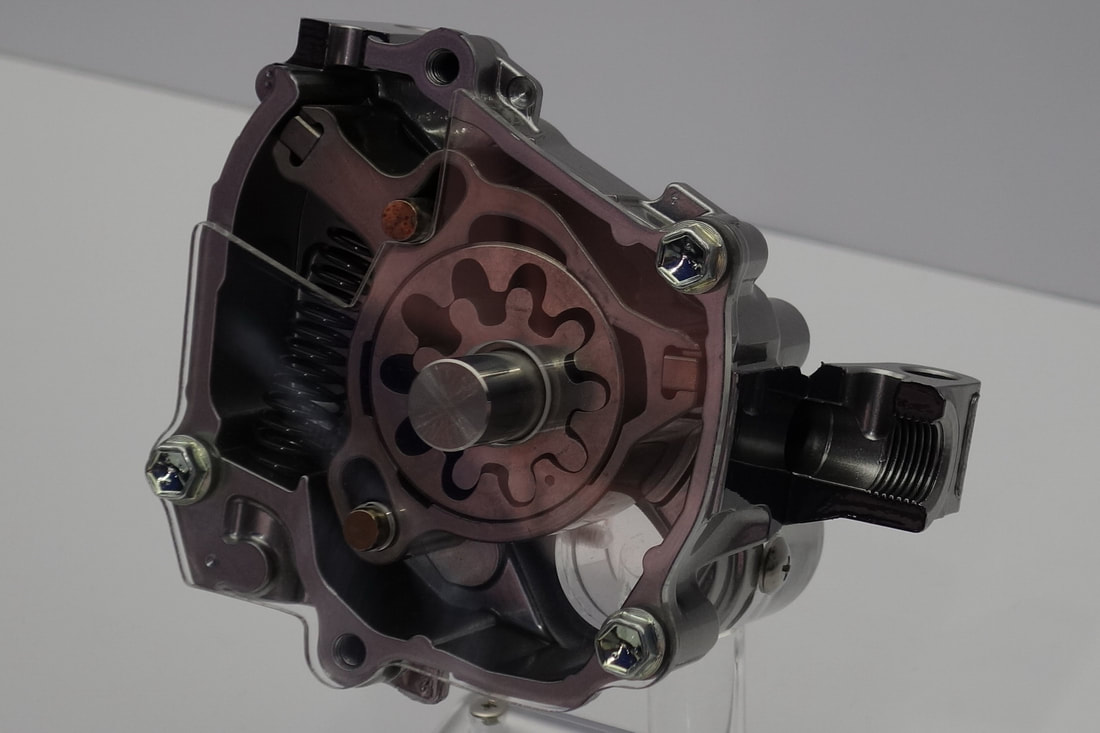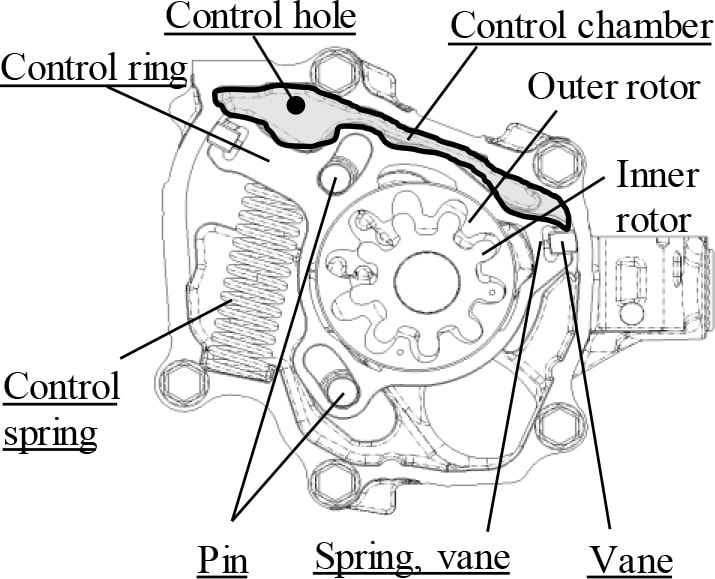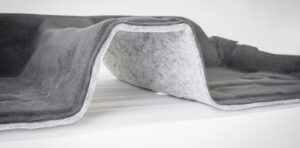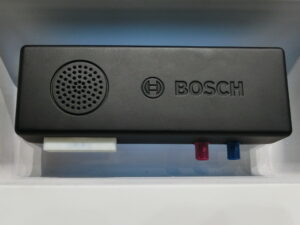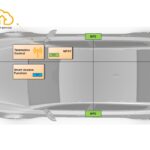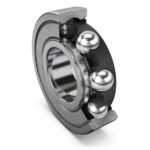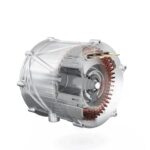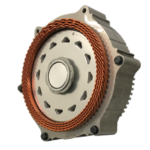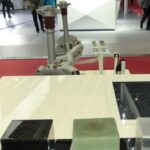Aisin Seiki
By controlling the oil flow rate under any engine running conditions, additional work is reduced, which then contributes to the reduction of engine friction losses.
Under the action of pressure in the control chamber, a regulator moves and changes the mutual position of the internal and external rotors, thereby achieving a smooth change of the oil charge volume.
Charging efficiency was improved by enabling oil to pass between the inner and outer rotors at locations other than the inlet and discharge boundaries. This design has the effect of enlarging the rotor teeth width and maintaining the discharge volume, while making the outer rotor diameter more compact.
Adopting this oil pump in a new 2.5-liter engine (A25A-FKS) reduces friction by
dynamically lowering the oil pressure from cold conditions, and helps to switch the oil jets on and off hydraulically.
dynamically lowering the oil pressure from cold conditions, and helps to switch the oil jets on and off hydraulically.

